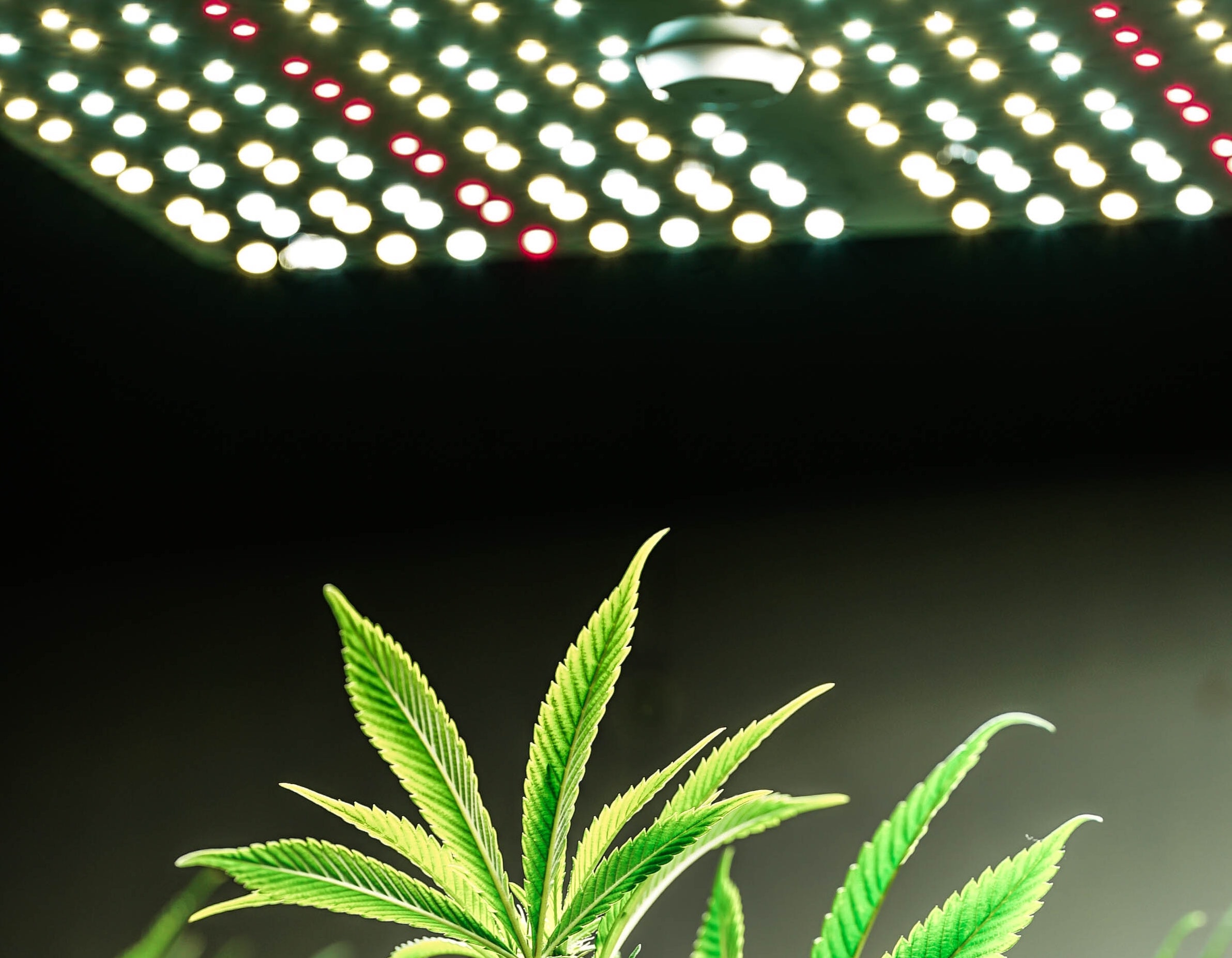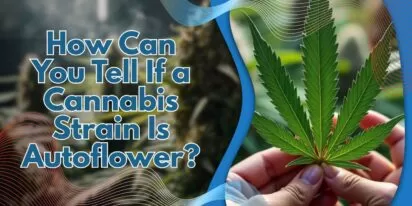Table of Contents

When cultivating cannabis, few things are as crucial as proper light schedules. As a photoperiod plant, the amount of light your plant receives will dictate when it starts flowering and how heavy the harvest will be. By giving your cannabis plant 12 hours of darkness (uninterrupted) per day, they will begin to flower.
To maximize your ability to find success cultivating cannabis, we need to understand how to maximize the effectiveness of our lighting schedule though.
Today, we will take a deep dive into light schedules for Cannabis Seeds and the changes they must undergo for indoor and outdoor operations.
Light schedules involve the cycle of darkness and light used to bolster the growth of your plant. As cannabis plants require intense levels of light with changing needs throughout their growth, cultivators must be ready to change their system to meet the needs of their plants.
We can see how scheduled lighting can change based on the stage of your plant’s growth.
Every great cannabis plant began as a seedling. After you’ve acquired your seeds and have properly germinated them, you are ready to introduce a lighting schedule. At this stage of your plant’s growth, it is considered a seedling. Seedlings may have small roots, but they are not yet ready to be transplanted.
To maximize the lighting schedule of your seedlings, give the plant plenty of energy so that it can develop its root system. Developing a functioning root system is an energy-intensive task and thus requires roughly 18 hours of light per day with 6 hours of darkness to follow.
Growers have been experimenting with lighting schedules in the seedling phase since the first Cannabis Seeds were cultivated. Some growers opt for 20 hours of light with 4 hours of darkness to pump up the efficiency of their operation while still giving their plants time to catch their breath.
Here’s a warning though, seedlings do not require bright lights to prosper or grow well. Lights that overpower your seedlings can end up harming them, reducing their ability to grow healthily. Use weaker bulbs or dimmer lights to protect your plants from heat and potential burns.
Unless you are working with autoflowering seeds, opt for an 18/6 or 20/4 light schedule.
As one of the most important times in a plant’s life cycle, the vegetative stage must be carefully monitored to maximize later success. This stage is when the plant grows both taller and wider, developing stems, leaves, and the other biological matter necessary for its bud sites to flourish.
Whether you’re working with outdoor or indoor plants, you must provide them with at least 13 hours of light per day. Growers can potentially keep their plants in the vegetative state forever so long as they maintain short nights with a proper light schedule.
To maximize the growth of your plant while it is in this state, provide up to 24 hours of light per day. Some growers will opt for an 18/6 schedule to provide relief at night for their plants while still encouraging quick growth during those daylight hours.
For outdoor growers, you will see your plants transition from the vegetative stage late into the spring or early into summer, though every strain is different.
For novice to intermediate growers, avoiding lighting schedules can be as simple as opting for autoflowering seeds. Autoflowering seeds are strains that will flower automatically after roughly three months, no matter what lighting is provided by their grower. More simple and easier to implement than traditional outdoor Cannabis Seeds, autoflowering strains are a great way to get your first plants started.
With this being said though it’s important to pay attention to your seedbank’s instructions to make sure that you can find the right autoflowering strains for your operation.
With the vegetative state behind us, it is time to look ahead to the third and final phase of these plants’ life cycles. This stage occurs naturally for outdoor growers when their plants get 12 hours of sunlight per day. Outdoor flowering stages can last between 8 and 12 weeks, depending on the strain, the growing environment, and the health of the plant.
For indoor growers, a lighting schedule of 12 hours on and 12 hours off will help to initiate the flowering cycle. Once the cultivator has changed their lights over to this 12/12 schedule, they will have roughly six weeks to five months of growing time before their plants are ready for harvest.
Note For ALL Growers: Avoid any light pollution at night. Make sure that the plants are not exposed to light during the night or dark periods, even from spotlights or streetlights. Light pollution can confuse your cannabis plants, thus preventing them from flowering properly.
The world of autoflowering strains has fundamentally changed how many folks approach cannabis cultivation. Autoflowering cannabis plants are plants that have been crossbred with Cannabis Ruderalis. The resulting plant is a cannabis plant that flowers based on time rather than the light/dark schedule put in place by the grower.
Autoflowers traditionally have a short vegetative phase without the need to switch to a 12/12 schedule during flowering. Some growers will grow autoflowering strains with an 18/6 light cycle throughout the entire duration of their plant’s growth.
Light schedule suggestions for autoflowering cannabis include:
Properly lighting your cannabis plant is one of the most important steps in their growth. Seedlings don’t need a ton of light, vegging plants demand a lot of energy, and flowering plants must have at least 12 hours of darkness per night. With this all being said though, you should always be ready to experiment with your scheduling as genetics may cause variation between strains that might impact your overall results.

Curious about growing weed in a healthy, effective way? Welcome to the realm of weed hydro! This method uses water instead of soil, delivering n

Peyote Zkittlez is a unique cannabis strain that has quickly gained dedicated followers among enthusiasts and patients alike. Its parentage—Zk

As growers, we want strains that work well, are strong, and are of good quality. Autoflowering cannabis strains are a big step forward for both

Pot growers always ask the same basic question: How much weed does a weed plant produce? The answer is complex and depends on a multitude of var

Ever had the room spin after a few hits? You're not alone. Figuring out how to prevent getting dizzy high can make your cannabis experience a wh

Drying cannabis properly is a critical process in preserving the plant's full aroma and flavor and its psychoactive abilities. Tampering with th

Ever caught yourself a bit too high and all of a sudden in need of being normal? Whether you're heading out for munchies or bumping into someone

Looking for sage advice on how not to get pinched with weed without batting an eye? Attempting to protect your stash from gossipy roommates, sno

Nutrient lockout, also known as nutrient binding or chemical antagonism, is a significant issue in cannabis cultivation that negatively impacts

Germination is the most critical initial stage in growing healthy, high-quality cannabis plants. During germination, the dormant seed becomes a
Are You 18 Or Over?
By selecting “Continue”, you confirm that you are at least 18 years of age and legally permitted to access cannabis related content in your region.
By using Rocketseeds.com, you agree to our legal disclaimer.
Excellent blog here Also your website loads up very fast What web host are you using Can I get your affiliate link to your host I wish my web site loaded up as quickly as yours lol
Your writing is not only informative but also incredibly inspiring. You have a knack for sparking curiosity and encouraging critical thinking. Thank you for being such a positive influence!
Simply wish to say your article is as amazing The clearness in your post is just nice and i could assume youre an expert on this subject Well with your permission let me to grab your feed to keep updated with forthcoming post Thanks a million and please carry on the gratifying work
Somebody essentially lend a hand to make significantly articles Id state That is the very first time I frequented your website page and up to now I surprised with the research you made to make this actual submit amazing Wonderful task
Your blog is a beacon of light in the often murky waters of online content. Your thoughtful analysis and insightful commentary never fail to leave a lasting impression. Keep up the amazing work!
Thank you for the auspicious writeup It in fact was a amusement account it Look advanced to more added agreeable from you By the way how could we communicate
Your blog is a constant source of inspiration for me. Your passion for your subject matter shines through in every post, and it’s clear that you genuinely care about making a positive impact on your readers.
Your blog is a constant source of inspiration for me. Your passion for your subject matter is palpable, and it’s clear that you pour your heart and soul into every post. Keep up the incredible work!
Your articles never fail to captivate me. Each one is a testament to your expertise and dedication to your craft. Thank you for sharing your wisdom with the world.
Your blog is a testament to your dedication to your craft. Your commitment to excellence is evident in every aspect of your writing. Thank you for being such a positive influence in the online community.
Your writing has a way of resonating with me on a deep level. I appreciate the honesty and authenticity you bring to every post. Thank you for sharing your journey with us.
Your blog is a true gem in the world of online content. I’m continually impressed by the depth of your research and the clarity of your writing. Thank you for sharing your wisdom with us.
Hi i think that i saw you visited my web site thus i came to Return the favore Im attempting to find things to enhance my siteI suppose its ok to use a few of your ideas
Somebody essentially help to make significantly articles Id state This is the first time I frequented your web page and up to now I surprised with the research you made to make this actual post incredible Fantastic job
Usually I do not read article on blogs however I would like to say that this writeup very compelled me to take a look at and do so Your writing taste has been amazed me Thanks quite nice post
Your blog has quickly become one of my favorites. Your writing is both insightful and thought-provoking, and I always come away from your posts feeling inspired. Keep up the phenomenal work!
Every time I visit your website, I’m greeted with thought-provoking content and impeccable writing. You truly have a gift for articulating complex ideas in a clear and engaging manner.
Hey there You have done a fantastic job I will certainly digg it and personally recommend to my friends Im confident theyll be benefited from this site
I have read some excellent stuff here Definitely value bookmarking for revisiting I wonder how much effort you put to make the sort of excellent informative website
Nice blog here Also your site loads up very fast What host are you using Can I get your affiliate link to your host I wish my site loaded up as quickly as yours lol
What i do not understood is in truth how you are not actually a lot more smartlyliked than you may be now You are very intelligent You realize therefore significantly in the case of this topic produced me individually imagine it from numerous numerous angles Its like men and women dont seem to be fascinated until it is one thing to do with Woman gaga Your own stuffs nice All the time care for it up
Your blog is a beacon of light in the often murky waters of online content. Your thoughtful analysis and insightful commentary never fail to leave a lasting impression. Keep up the amazing work!
Your blog is a breath of fresh air in the often stagnant world of online content. Your thoughtful analysis and insightful commentary never fail to leave a lasting impression. Thank you for sharing your wisdom with us.
Your blog is a beacon of light in the often murky waters of online content. Your thoughtful analysis and insightful commentary never fail to leave a lasting impression. Keep up the amazing work!
Usually I do not read article on blogs however I would like to say that this writeup very compelled me to take a look at and do it Your writing style has been amazed me Thank you very nice article
Your writing has a way of resonating with me on a deep level. I appreciate the honesty and authenticity you bring to every post. Thank you for sharing your journey with us.
This hydroponics guide is quite the buzz, seriously! Who knew growing weed without dirt could be so complicated yet potentially rewarding? The breakdown of systems like DWC and NFT is helpful, though I suspect my cat might confuse the air pump for a toy. The idea of cleaner buds is tempting, especially since explaining hydro weed to my non-growing friends might get messy. And the bit about potential dizziness from hydro weed? Perfect, now I have an excuse for why I always stumble a bit after a grow session. Still, the promise of faster grows and higher yields is hard to ignore, even if it means more trips to the pH meter than to the coffee shop. Overall, a cultivating read for the curious grower!